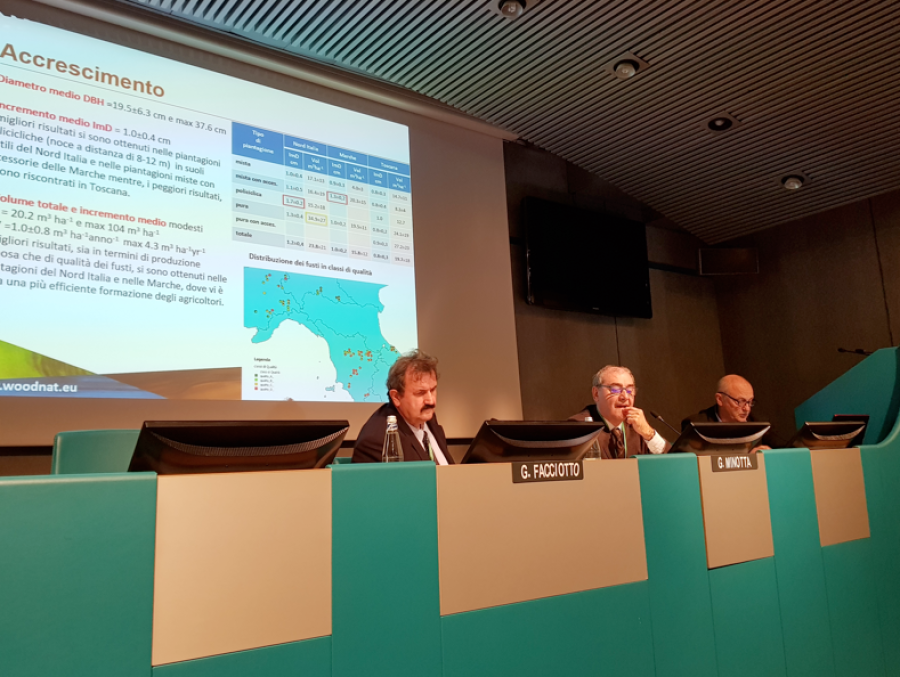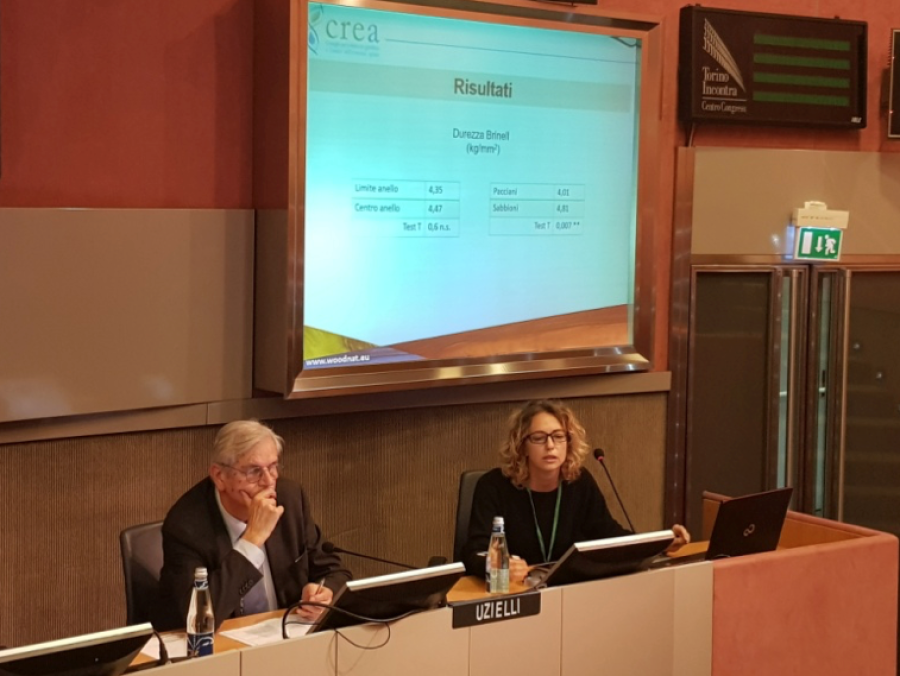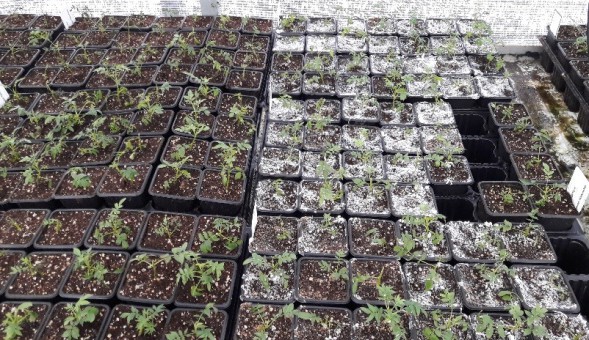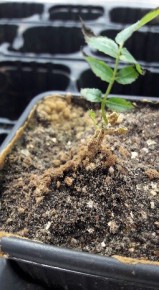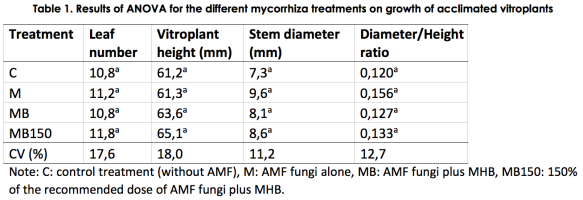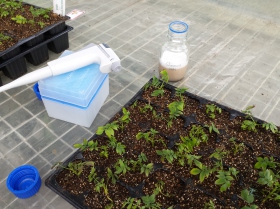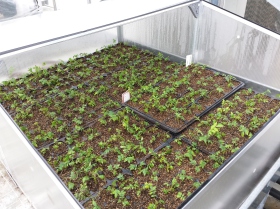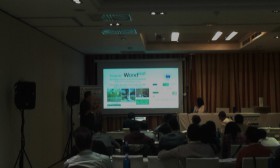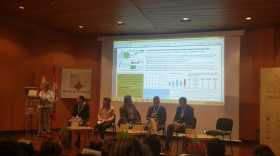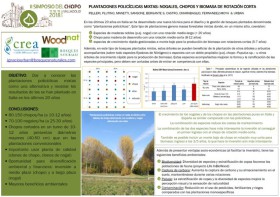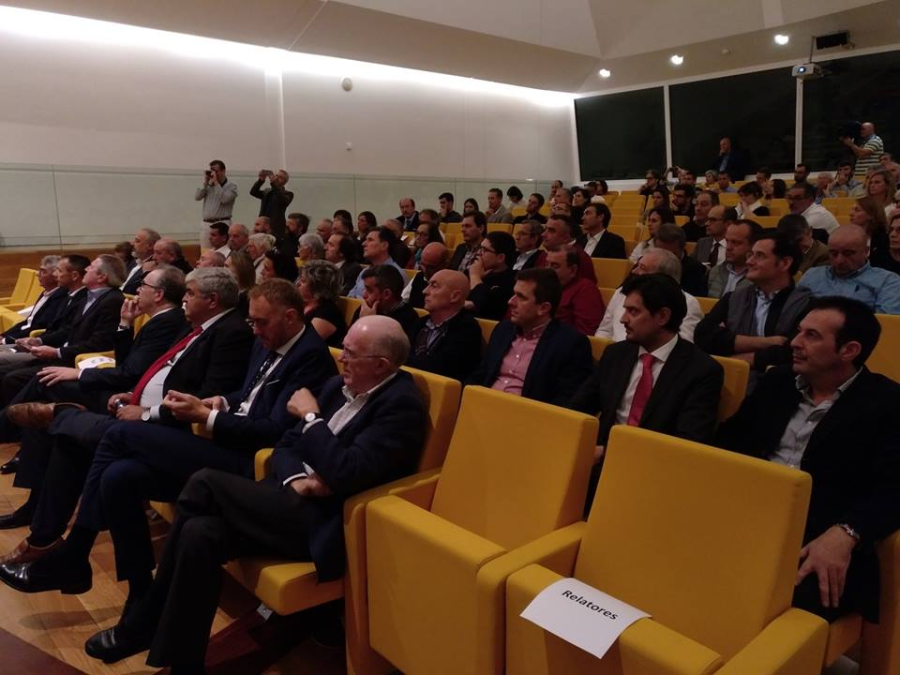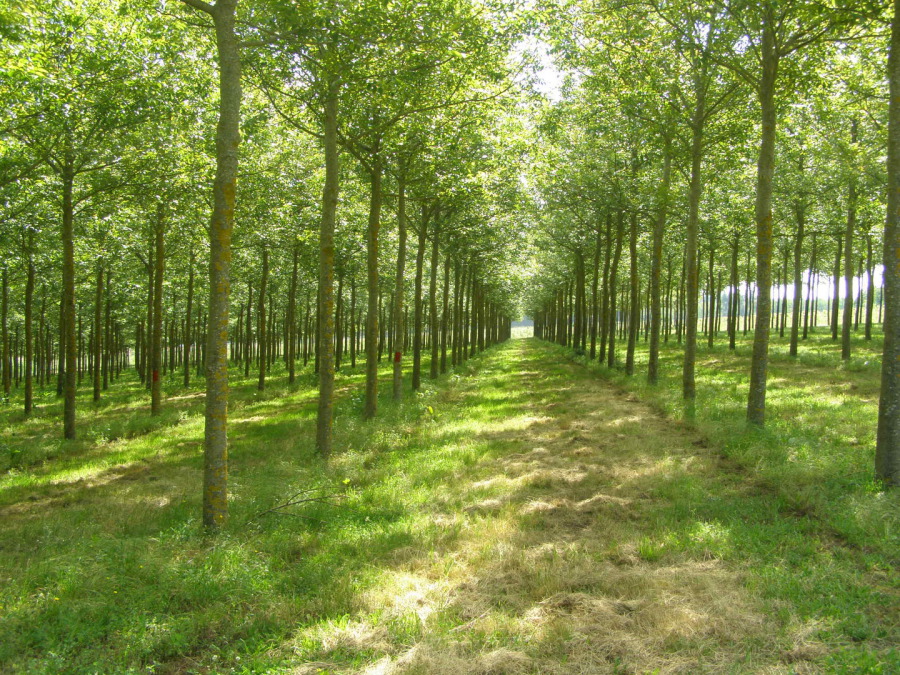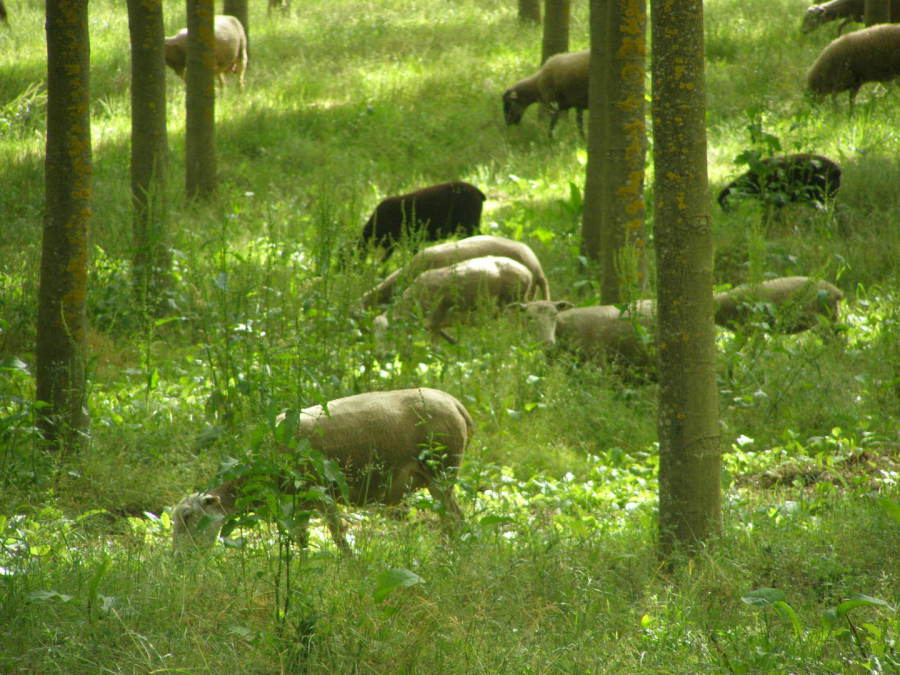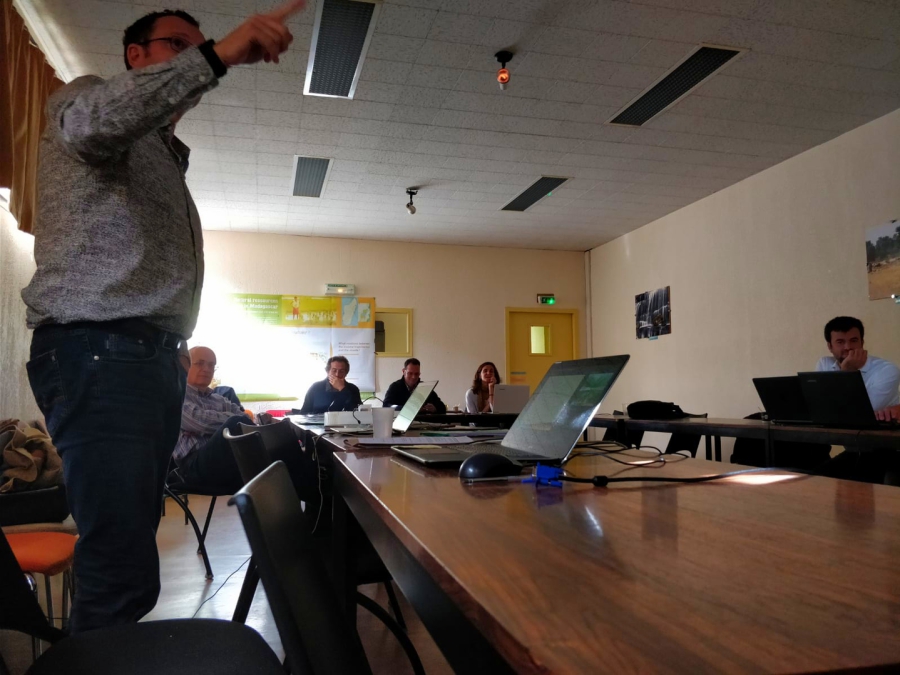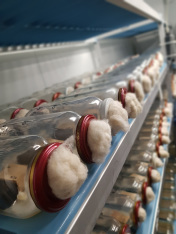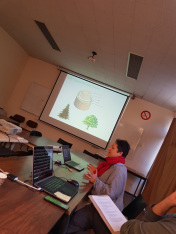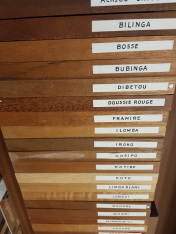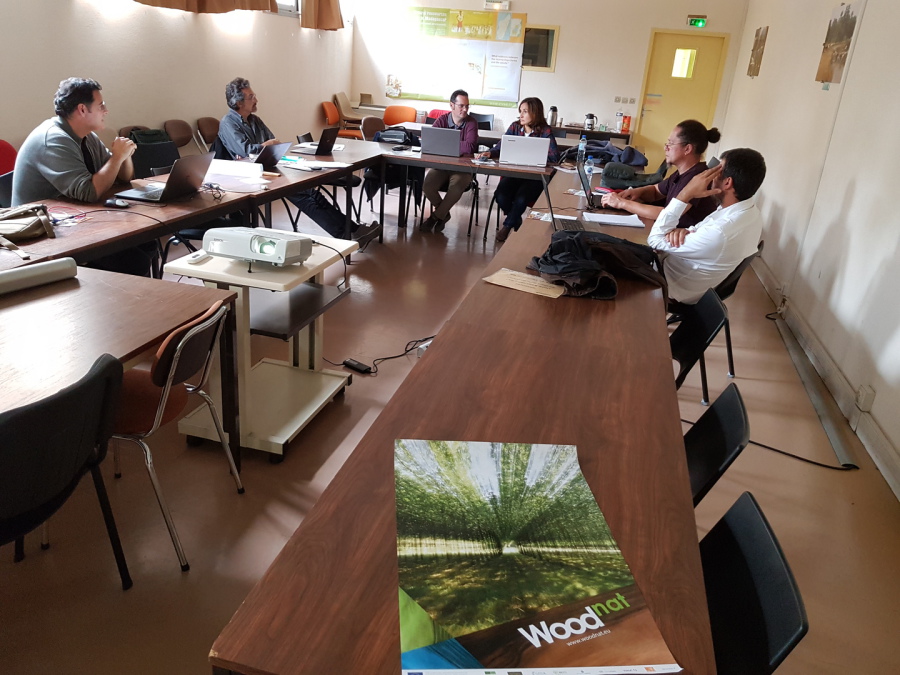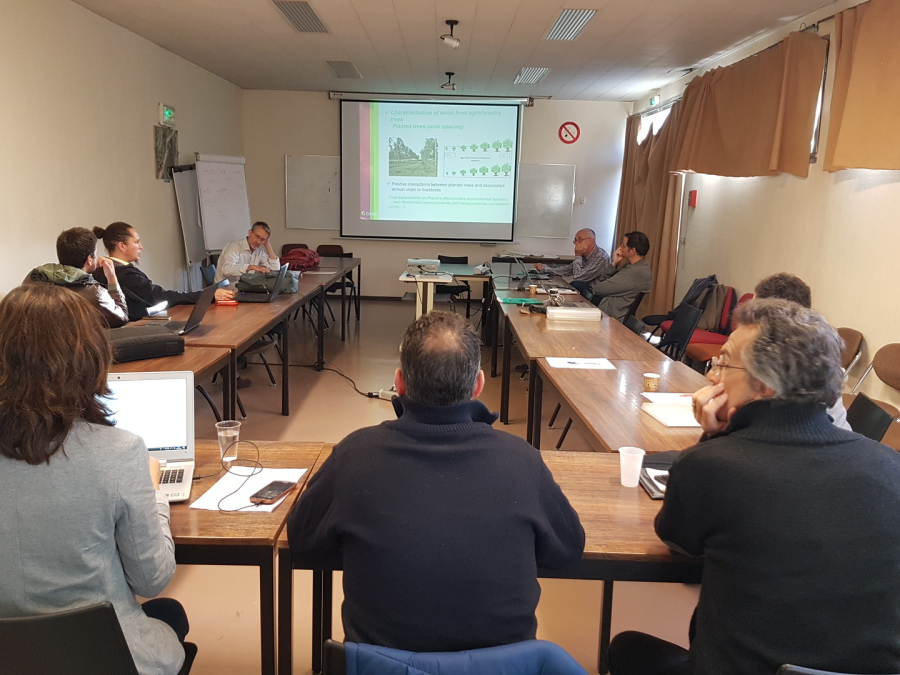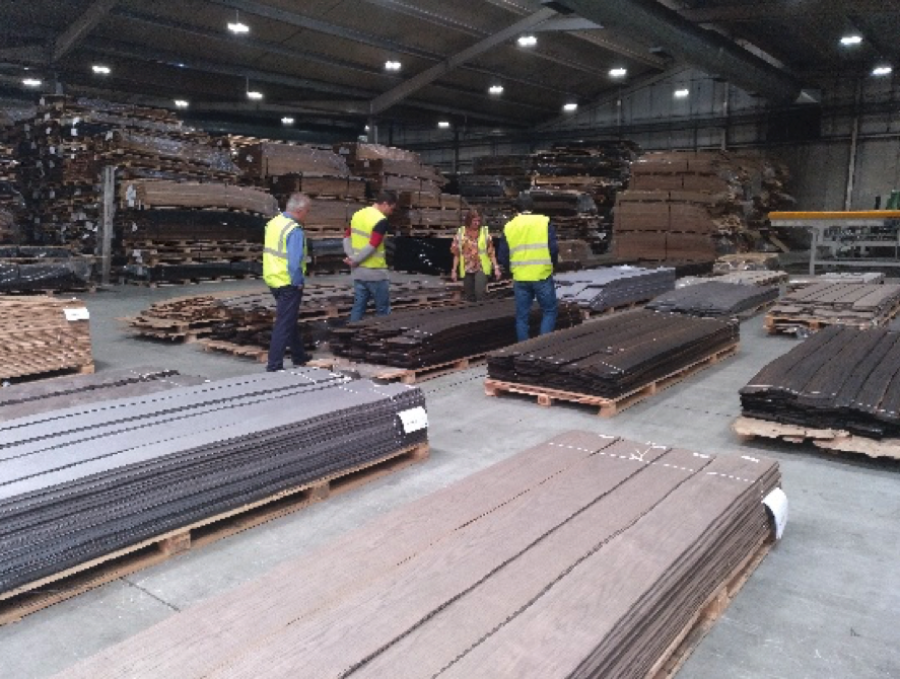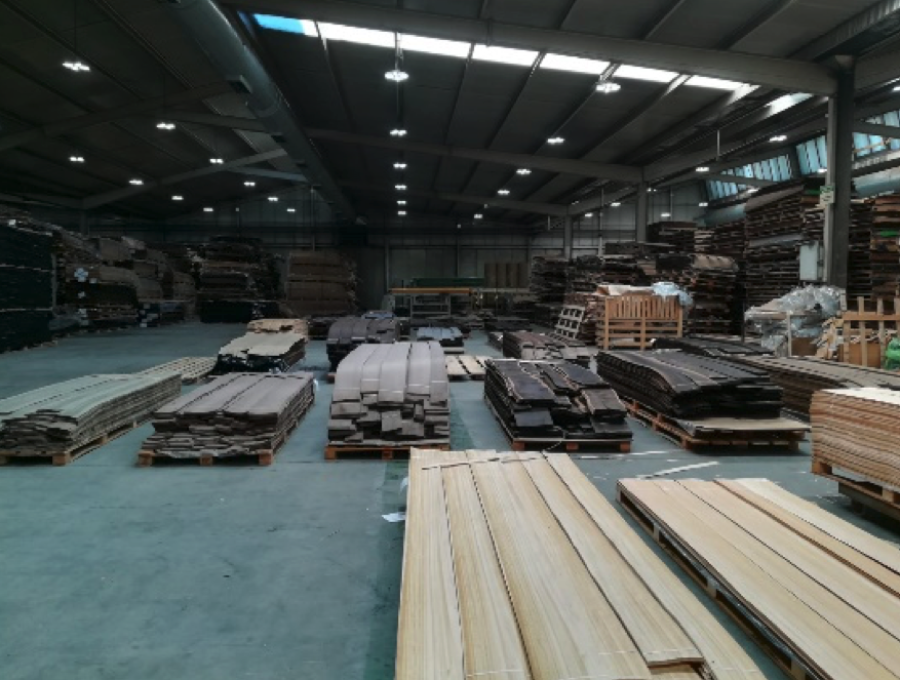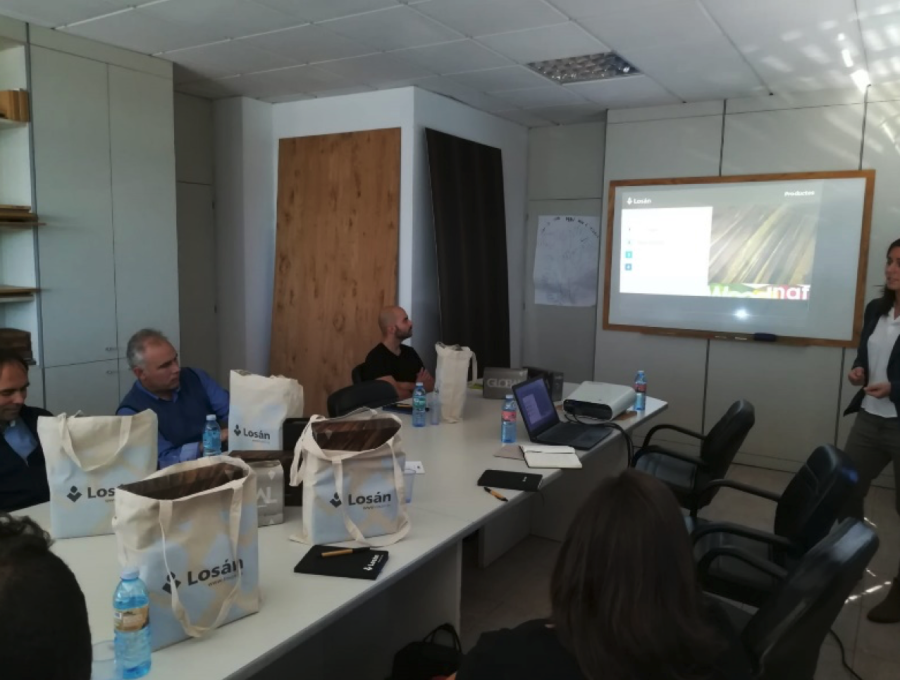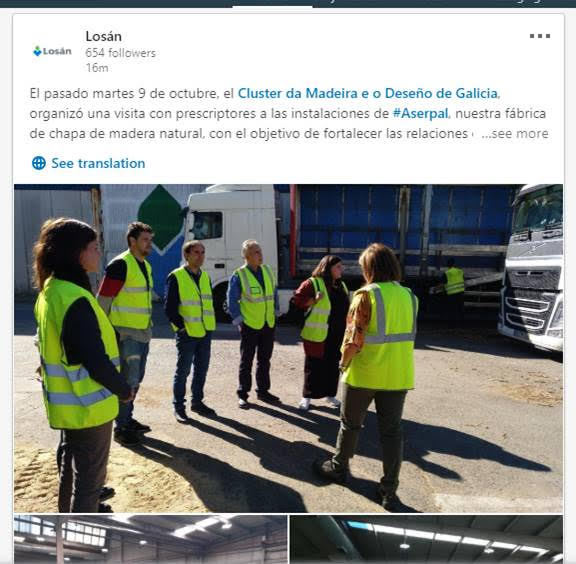4th International Congress on Planted Forests’, in Beijing, China by CREA
From 23 to 27 October 2018 CREA participated at the ‘4th International Congress on Planted Forests’, in Beijing, China. The International Congress on Planted Forests is an international academic
conference organized by the International Union on Forest Research Organizations (IUFRO) with the technical support of the Food and Agriculture Organization of the United Nations through its Planted
Forests Program. Three congresses have been held so far. The 1st and 2nd International Congress on Planted Forests were held in Chile in 1999 and in New Zealand in 2003; The 3rd was held in Europe in
2013. More than 180 delegates from 38 countries attended the conference, representing national and regional governments, private enterprises, universities, research institutes, international
organizations and non-governmental organizations. Among them, the Minister of Agriculture, Oceanography, Environment and Spatial Planning of Portugal and the Minister of Agriculture and Forestry of
France attended the congress. The 4th International Congress on Planted Forests (ICPF) aims to investigate the contribution of planted forests to green development in the context of global
changes.
Topics include the sustainability of planted forests in the context of changing climates and the future role of planted forests in bio-resources sustainability, environmental protection and green development. The 4th ICPF is also a space of interface between scientific communities, wider society and government policy initiatives related to planted forests.
During the section of Congress dedicated to Woodnat project: “Enhancing the walnut (Juglans spp.) planted forests for timber production”, the CREA staff orally presented the work: “Walnut and poplar mixed planted forests: the polycyclic plantations” with the data concerning the new improved mixed layouts tested in the Italian plantations monitored by WOODNAT
Casale Monferrato (AL), 18 November 2018
More info about the Congress: http://icpf2018.com/
IV National Congress of Silviculture’, in Torino by CREA
From 5 to 9 November 2018 CREA participated to the ‘IV National Congress of Silviculture’, in Torino, Italy, organized by the Italian Academy of Forest Sciences with
the collaboration of the Piemonte Region and the University of Torino, with the support of the most important academic and scientific institutions and of the forestry and environmental organizations.
Globally, sylviculture has acquired a growing importance, which goes beyond the cultivation of existing forests: together with the traditional production and protection functions, in the last years
scientific progress and society’s expectations have acknowledged forests with new roles, which have been included in International Agreements and Agendas and have changed the idea of the
forest in the public’s imagination. Nevertheless, the growing presence of forests in international debates and in the media has not always been followed by an adequate attention to forest management
and planning in the short term, but mainly in the medium and long ones. This Congress is a forum where researchers, representatives of national and local governments, of the public and private
forestry and of the environmental sector, are able to exchange and discuss experiences and results, with the aim of providing innovative, forward looking scientific and technical syntheses,
aimed at the full implementation of sustainable forest management at all levels. The staff of CREA presented orally two works regarding the Woodnat project:
- during the Session 10 – Timber/wood plantations and agroforestry, Francesco Pelleri presented: “Walnut plantations in Italy: a GIS database in the frame of the H2020 Woodnat”. This presentation shows the first work of data collection of Italian walnut plantations through the GIS instruments, the main data of growth and quality of walnut trees.
- during the Session 11 – Research, innovation and perspectives in the forest-wood chain, Sara Bergante presented: “Common walnut wood characteristics in two different Italian plantations”. This work shows indicative data on wood characteristics of common walnut trees grown both in pure and polycyclic plantations monitored by WOODNAT.
The data presented as part of these works will be afterwards published in the CREA Open Access Journal “Annals of Silvicultural Research” (ASR).
Casale Monferrato (AL), 18 November 2018
More info about the Congress, presentations and proceedings: https://silviculturecongress.com/
More info about the CREA Journal ASR: https://journals-crea.4science.it/index.php/asr
Effect of Arbuscular Mycorrhizal Fungi inoculation on walnut survival and growth during acclimation phase.
During the Wodnat project and with the previous results obtained in the previous news (Effect of Arbuscular Mycorrhizal Fungi inoculation on walnut survival during acclimation phase) ECM established a new assay to assess the influence of mycorrhization and bacteria in survival and growth of vitroplants.
To carry out this, four treatments were assessed: Control without Arbuscular Mycorrhizal Fungi [AMF] (C); AMF fungi alone (M); AMF fungi plus MHB (MB) and 150% of the recommended dose of AMF fungi plus MHB (MB150). Both AMF and MHB were supplied in the dose of 50 spores/vitroplant and 1x107 bacteria/viroplant in the moment of transplanting from in-vitro to ex-vitro conditions. After 6 weeks, the number of surviving vitroplants were registered. Then, the acclimatized vitroplants were transplanted to a field nursery. The number of leaves, the height and diameter were measured and the diameter/height ratio was calculated.
The experiment was set and despite several batches of genotypes were treated with AMF fungi and MHB, initial failures in the functioning of the acclimatization area avoided the obtaining of solid results. Besides, unexpected damages were caused by uncontrolled mold growth associated with the treatments with AMF (Figure 1).
The reason could be found on the nutrients added in the inoculum, and this forced us to suspend these trials.
Moreover, results of this assay did not show influence of the different treatments (Table 1). Undoubtedly, the statistical results observed in the assay were not as expected. Nonetheless, average values and trends did match our expectations. For example, vitroplants inculated with the highest dose of AMF were also the largest. Also, despite non-significantly, control plants were the ones that, on average, performed poorer, with the lowest height and stem diameter. As a matter of statistical significance, we believe that in this case, a larger sample size would have provided significant results.
Effect of Arbuscular Mycorrhizal Fungi inoculation on walnut survival during acclimation phase.
In vitro production of plants is an advanced laboratory technique that allows us to propagate genetically uniform plant material. In woody plant species, such as
walnut, it allow us to obtain high quality plants that are genetically superior and free from pests and diseases.
However, from plants are produced in vitro to open air conditions, vitroplants tend to suffer from drought, difficulties in nutrient or pests and diseases attacks. This possibility would avoid improving their status in terms of leaf tissue thickens, stem back develops and the root system evolved and sometimes some vitroplans die.
In this project, ECM has been researching about the improvement of vitroplant hardiness by using symbiotic organisms and the enhance of the symbiosis process with Mycorrhiza Helper Bacteria (MHB).
Two assays have been carried out to improve our knowledge in this topic.
The first assay was carried out to evaluate the survival of the plants in two different growth stages, in order to choose the best option at the end of the trial [Experiment 1: in the final stage of in vitro and Experiment 2: ex-vitro stage]. Three treatments were considered: Control (C), with no inoculum; Mycorrhizal inoculum (M); Mycorrhizal inoculum + Bacteria (M + B).
In experiment 1 results did not show significant differences in terms of survival or the percentage of mycorrhization, since no mycorrhizal roots were observed. The reasons could be that plants did not force to endure stress conditions, since they grew inside the jars aseptically, and, in addition, they did not evolve a strong radical system due to its vitro origin. Therefore, in-vitro mycorrhization did not show useful results from the point of view of plant production. Moreover, the beneficial effect of the bacteria could not be evaluated on in vitro plants, since there was no mycorrhization.
In contrast, in experiment 2, results showed that the survival ranged from 30 to 75%. In one of the clones, higher values were obtained in the treatments with presence
of mycorrhiza and mycorrhiza with bacteria (M and M+B). Similar results were found in other clone. Therefore, the effect of the mycorrhization reduces the mortality of the plants with and without the
additional support of the bacteria.
Presentation of Woodnat Project at AgroParitch by Wale
AgroParisTech is a higher education and research institute (“Grande Ecole”) aiming at addressing some of the main global challenges of the 21st century : feeding a growing population while sustainably managing territories, preserving natural resources, supporting innovation and integrating the bioeconomy.
While doing so, it addresses the following fields : agronomic sciences and technologies, forestry, life sciences, food technology, biotechnologies, environment,
health, management of natural resources, territories development…
Main features of AgroParisTech :
- Internationally renowned for the high quality of its training programmes & research activities
- Research-based training
- Focus on innovation & entrepreneurship
Two key missions :
- To offer high quality training to students and professionals in the different curricula delivered by AgroParisTech
- To advance scientific knowledge, in close association with public and private research centers, main relevant technical-vocational centers and industrial partners
Some key facts :
- > 2.000 students (20% international)
- 375 Ph.D. students (40% international)
- 230 academic staff
- 24 joint research units
- 5 departments
- 8 campuses (4 in Paris and the greater Paris area)
HORIZON2020
- PREMIUM - Preservation of microorganisms by understanding the protective mechanisms of oligosaccharides (2018/2021)
- REMIX - Redesigning European cropping systems based on species MIXtures (2017/2021)
- Green Protein - Revalorisation of vegetable processing industry remnants into high-value functional proteins and other food ingredients (2016/2021)
- ZELCOR– Zero Waste Ligno-Cellulosic Biofineries by Integrated Lignin Valorisation (2016/2020)
- MARCO - MArket Research for a Climate Services Observatory (2016/2018)
- FOODSECURE – Interdisciplinary research project to explore the future of food and nutrition security (2012/2017)
- LOGIST’EC – Improving logistics for Biomass supply from energy crops (2012/2016)
- DiverIMPACTS - Diversification through Rotation, Intercropping, Multiple cropping, Promoted with Actors and value-Chains Towards Sustainability (2017/2022)
WOODNAT HAD A SPECIFIC SESSION AT THE INTERNATIONAL CONGRESS ON PLANTED FORESTS 2018 CELLEBRATED IN BEIJING (CHINA)
Bosques Naturales and CREA organized a specific session dedicated to WOODNAT at the International Congress on Planted Forests 2018 celebrated in Beijing (China) (icpf2018.com), with the title “WOODNAT project: enhancing the walnut (Juglans sp.) planted forests for timber production”.
The 2 hours session focused on walnut planted forests for timber production followed the integral approach which is the base of the WOODNAT project and covered technical issues from nurseries to management of planted forests and timber market and industry. In addition to these technical issues, a first block of presentations was focused on the description of the global situation of these kinds of forests in Europe, in USA and in Chile.
In addition to the presence of the WOODNAT partners from CREA and Bosques Naturales, the session included the communications of other collaborators such as Veronica Loewe (INFOR, Chile), Douglas Jacobs (Purdue University, USA), Piero Paris (CNR-IRET, Italy) and Mª Rosa Mosquera (USC, Spain).
The communications have been uploaded to the ResearchGate WOODNAT site and it can be downloaded using this link [https://www.researchgate.net/project/Second-generation-of-planted-hardwood-forests-in-the-EU-WOODnat]
After the Congress, Bosques Naturales participated in the International Workshop for Heads of Forest Research Institutions entitled “Forest Research in Response to Climate Change” organized by the
Chinese Academy of Forestry Science who organized an event for the celebration of their 60th Anniversary: Congratulations!!
BOSQUES NATURALES PRESENTED THE RESULTS OF THE NAT 7 WALNUT CLON AT THE IV MEETING OF THE REFORESTATION GROUP OF THE SPANISH SOCIETY OF FOREST SCIENCE
WOODNAT was present at the IV Meeting of the Reforestation group of the Spanish Society of Forest Science which was held in Alcázar de San Juan (Spain) in October 17th, 18th and 19th in collaboration with the Spanish Association of Terrestrial Ecology (https://reunionsecfaeet.es). The scope of the meeting is mainly scientific, and several research communications were presented combining more applied research projects dedicated to reforestation and some other more basic research more focused on terrestrial ecology.
In this scenario, Bosques Naturales presented an oral communication showing the field performance of the NAT 7 commercial clon in the different regions in Spain where the company own and manages their planted forests (Galicia, Toledo, Cuenca and Girona). The data showed the results of clonal planted forests with age between 8 and 15 years old and was evaluated using the site quality classes reported by Montero and Cisneros (2006).
The communication (in Spanish) has been uploaded to the ResearchGate WOODNAT site and it can be downloaded using this link [www.researchgate.net/publication/328602076_NAT_7_BN_bosques_plantados_clonales_de_nogal_hibrido_Juglans_x_intermedia_MJ_209_para_la_produccion_sostenible_de_maderas_nobles]
In addition to this, the book of abstracts of the meeting can be downloaded from the following link [reunionsecfaeet.es/download/descarga-el-libro-de-resumenes-aqui/#]
BOSQUES NATURALES AND CREA PARTICIPATE IN THE II POPLAR SIMPOSIUM IN SPAIN
WOODNAT was present at the II Poplar Symposium held in Valladolid (Spain) in October 17th, 18th and 19th (www.simposiodelchopo.es). Several researchers, forest managers, landowners, industry technicians and many other stakeholders from the poplar sector participated in this 3-days meeting celebrated in the Castilla-Leon region, where around 44,000 ha of poplar planted forests are managed (more than half of the area planted in Spain).
In this scenario, CREA and Bosques Naturales presented an oral communication regarding the experiences of CREA in Italy with polycyclic plantations mixing walnut, poplar and short rotation coppice for biomass production. For the presentation in the Congress, we also got advantage from the collaboration with Mª Angeles Ripoll, a researcher from the IFAPA (Granada, Spain) who participates in close relation with Bosques Naturales in several research trials regarding the management of walnut planted forests in Granada either in pure and mixed planted forests with poplar.
The communication (in Spanish) has been uploaded to the ResearchGate WOODNAT site and it can be downloaded using this link [www.researchgate.net/publication/328760254_PLANTACIONES_POLICICLICAS_MIXTAS_NOGALES_CHOPOS_Y_BIOMASA_DE_ROTACION_CORTA]
In addition to this, a video recorded during the oral communication can be seen using the following link [www.simposiodelchopo.es/sites/default/files/videos/mesa_04.mp4] from minute 1:39 to 1:46.
Transforming the experimental protocol in a commercial technology.
The transference of the experimental micropropagation protocol to a new laboratory at Bosques Naturales
Certainly, the transferability of a micropropagation protocol is a difficult and unpredictable process. In the case of walnut, this situation is complicated by its recognized recalcitrance to tissue culture. Thus, both human and material resources, the climatic conditions, the logistic of production and the involved species are factors that determine the success, or not, of the transference. In the frame of Woodnat project, the experimental protocol of Bosques Naturales for the micropropagation of walnut hybrid was transferred to Industrial Plant. Despite some positive results have been obtained by Industrial Plant, microbial contaminations and low multiplication rate have hindered the production of plants with the original protocol; therefore, it had to be changed and adapted to its particular conditions. Since the former micropropagation laboratory at Bosques Naturales was not adapted for massive production, the construction of a new facility will allow to increase its production capacity. The creation of a new laboratory represented a challenge once different conditions (temperature, humidity, light, microbial contaminants among the most important factors), to those for which the protocol was designed, would be met. Under these conditions the response of in vitro materials would be unpredictable, being then necessary to perform new adaptations to become functional the protocol, as have been happening at Industrial Plant, in a long-lasting process that would delay the initiation of plant production. The basic principle followed was to set the incubation conditions as close as possible to those defined in the original protocol. Although the multiplication stage began at the end of June 2018, in this first step was possible to reproduce the experimental protocol. It does mean that in the new facility, comparable results to those obtained in the former laboratory, even better in occasions, were obtained, even allowing to produce hundreds of vitroplants. After these results, during a second approach, the original protocol will be modified, reducing its complexity with the main goal to produce higher number of plants to a lower unitary cost.
Forest awareness
One of the most relevant conclusions at the Woodnat presentation held at CIRAD facilities on October the 18th was the idea of forest landscape to be much more than wood. According to the words of Emmanuel Groutel: wood is just one of the outputs of forest landscape, but landscape is much more important than this particular output. Forest is a complex reality involving social and environmental issues.
Woodnat partnership works on the improvement of Walnut competitiveness along all its life. The work planned refers to plants, trees, and finally wooden products. All the contributions focus on the same challenge: planting Walnut as competitive option against other species. This is the challenge of Walnut value chain, but also the challenge of other value chains based on different species.
According to the meeting held in Santiago de Compostela on October the 24th, Pinus Pinaster is another species threatened by fast-growing forest plantations and short-term business models. During the celebration of the meeting, more than 50 forest stakeholders signed a commitment to protect and promote Galician pine. Although pine is the basis for a large industrial sector, the available amount of pine trees decreased, and threatens thousands of SMEs in the region.
The Coordinator of Woodnat project was present at the meeting and signed that agreement. The text is an example of how relevant is to keep the forest landscape as a diverse landscape including different species, different forest models and diversity of stakeholders. It is a well-known that complexity allows richer environments, societies and economies. It is also clear that complexity increases the resiliency, which is the resistance to unexpected changes. Therefore, contributing to the complexity of forest landscape by means of large-term plantations such as Pine and Walnut, has a large and very positive impact on our territory which is worth to protect.
For more info. here are some links:
http://clustermadeira.com/acuerdo-historico-impulsar-la-recuperacion-los-bosques-pino-galicia/
Post Woodnat
During Montpelier meeting there was time to talk about the present situation of Woodnat Project, but there was also time to talk about the future of it. The end of the Project will occur in less than one year, and it will be a challenge for the development of Walnut economy in Europe. In addition to this, the results achieved within the Project should enter into a phase of effective industrialisation.
In order to boost the impact of the Project, three main talks were held at CIRAD facilities. The talks counted with the participation of six Partners from Woodnat Project: Seistag, Bosques Naturales, WAF, ECM, WALE and CREA. In addition to this, two Spanish Parties attended to the meeting using an internet connection. They were Nalonchem (a large chemical Company focused on green chemistry of carbon) and CETEMAS (a Private Research Centre focused on wood and forest industry). The talk included the participation of CIRAD researchers, Marie-France Thévenon, Jean Gérard and Remy Marchal.
One of the talks focused on wood modification. It included different processes that contribute to improve the performance of wood in the field of natural durability. It included natural processes such as duraminisation, but also other techniques as thermotreatment and furfuralisation. Those technologies might contribute to the market uptake of Hybrid Walnut produced by means of thinning as that material is mainly formed by sapwood. Regarding this issue, Gaetano Castro from CREA shared his research in the field of the emissions from thermotrearted wood used inside.
Another issue of interest were innovative models of plantations. Jean Gerard provided information about plantations in tropical regions that might inspire new models for introducing Walnut successfully across the European landscape. Ignacio Urbán from Bosques Naturales explained that their Company is developing similar models for Walnut plantations.
Finally, Rémy Marchal provided examples of available technologies for woodcutting and wood machining in order to develop industrial products for the market. The
behaviour of the raw resources can be improved to achieve competitiveness and accomplish the market by means of special tools, high speed cameras and 3D structural models. In addition to this, he
offered the available facilities of CIRAD for prototyping Walnut veneer by means of rotary peeling using spindles lathe.
Woodnat Project Presentation
On Friday October the 18th, Woodnat Partnership presented the Project in a Public event hold at CIRAD facilities. In addition to six Partners of the Project, the researchers of CIRAD were also present in that action. Therefore, the presentation started with a General Overview of the Project that was performed in French by PhD Emmanuel Groutel, the President of WALE.
After that presentation, three talks were offered to the Public, all of them in English. PhD Ricardo Licea from Bosques Naturales held the first one. He gave details on how are produced clonal plants of Walnut. He also explained the work done by the Partnership in order to scale up the production of plants, from lab scale to industrial scale.
Ignacio Urbán from Bosqes Naturales held the second presentation. He talked about the challenge of forest plantations, which are based on species that do not grow fast. He explained the research in the field of valorising the thinning process, which is needed at intensive plantations. He also provided details about alternative plantations such as Mixed Polycyclic plantations and Agroforestry systems.
PhD Elías Cueto from Seistag offered the last presentation. He shared two videos that show the process of prototyping different models of veneered boards that use
Hybrid Walnut Wood. The first video showed the production of 100% Hybrid Walnut veneer boards. Those boards had two different qualities depending on the logs being soaked or not. The second video
showed examples of a innovative product which is the veneered boards formed by mixed species. As Wale pointed out, in this product the amount of Hybrid Walnut veneer was shorter, but the final look
of the boards fit better to the actual market trends.
Visiting CIRAD facilities
On Friday October the 18th, Woodnat Partners visited CIRAD facilities. This action was held within the events of the General Assembly held in Montpellier. The visit was possible thanks to the effort of Jean Gérard and Rémy Marchal who also helped by providing room and facilities for the General Assembly.
The visit included three main contacts. From one hand, the Woodnat Partners had the opportunity to discover the climatic chambers of the Research Centre. Marie-France Thévenon explained how the samples are conditioned before any trial. She also showed the climatic chambers evaluating the natural durability of samples, which included exposition to fungi and also to termites.
A second visit focused on the morphological analysis of wood species. Patrick Langbour showed to Woodnat partners the large collection of wood samples and explained how are they ordered and documented.
The visit to CIRAD facilities finished with an interview with Laurent Van de Steene, who is in charge of the biomass laboratory. During the encounter, the Woodnat
Partners had the opportunity to see different prototypes for wood modification, from Pyrolisis to Torrefaction. The Research centre owns different small scale pilot plants that make possible
experimental trials that will be impossible otherwise.
General Assembly
On Thursday October the 18th, the General Assembly of Woodnat Project was held in Montpellier. In order to increase the visibility of the Project and reach a higher impact, the meeting was held at CIRAD facilities which are placed in the outskirts of that city.
The meeting count with the assistance of six Partners of the Consortium. The Companies Seistag, Bosques Naturales, WAF and ECM came from Spain. In addition to the Spanish Partners, CREA from Italy and WALE from France were also present.
During the meeting, the Project Coordinator shared the details of the External Review of the Project implementation. That evaluation refers to the first 18 months of the work program. The most relevant topics of that review refer to Dissemination actions. The improvements had been previously detailed at Deliverable 8.3, which was submitted before than expected in order to set the rules of the Dissemination Plan in advance.
Following that document, the partnership agree on several improvements. From one hand, to increase the activity in the Website of the Project. On the other, to launch new interactions by means of social Medias. In addition to this, the consortium agree to hold meetings at third parties facilities. And finally, the partners agree on recording videos that explain the importance of Woodnat and their actions within that Work program.
On the basis of that general agreements, the Consortium set the next General Assembly to be held at CETEMAS facilities in Asturias (Spain). CETEMAS is a Public Research Centre focused on forest and wood industry. The final dates for that meeting will be set along May 2019. The exact date will be established in order to facilitate the presence of SEB, which is the French Society of Experts du Bois.
The CMD organises a visit to Losán’s facilities
The Galician Wood and Design Cluster, organised a visit to our veneer factory, last 9th of October in Aserpal, with the idea of reinforcing relations between industry and specifiers.
Guided by Dolores Sánchez, the factory’s director, and by Núria Dengra, Specifier Department Manager, a group of architects and designers got to know first hand the different phases in which wood is transformed from a log to a veneered panel to be used in wall panelling, doors or furniture. In this way, decision makers learnt in depth the manufacturing process of the product that they will later apply in projects. It was also an opportunity to talk about Woodnat, our R+D project in Romania.
LOSAN organized a meeting with designers this week. It was one of the actions detailed at the Disemination Plan. They also hanged the new at their linkedIn: https://es.linkedin.com/company/losan?trk=recent-update_content#updates



